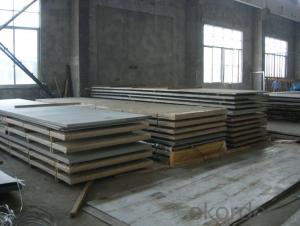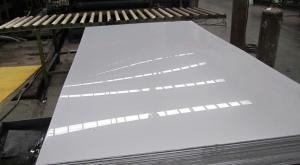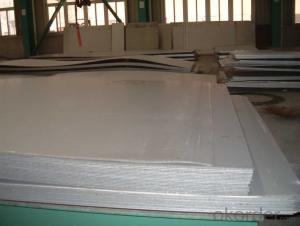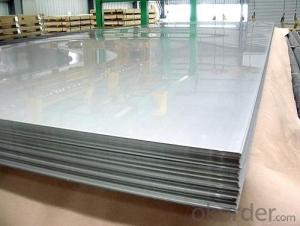Stainless Steel Sheet and plate with surface treatment
- Loading Port:
- Shanghai
- Payment Terms:
- TT OR LC
- Min Order Qty:
- 250 m.t.
- Supply Capability:
- 5000000 m.t./month
OKorder Service Pledge
OKorder Financial Service
You Might Also Like
Hot sale stainless steel sheet 201/202/304/304l/316/316l/430
Description of Stainless Steel Sheet:
Description | steel sheet,hot rolled steel sheet,cold rolled steel sheet, steel sheet,sheet,steel plate |
Standard | ASME, ASTM, EN ,BS,GB,DIN, JIS etc |
Application | Steel sheet applies to construction field, ships building industry, petroleum & chemical industries, war and electricity industries, food processing and medical industry, boiler heat exchanger, machinery and hardware fields. |
Packaging | Standard export sea-worthy packing |
Delivery time | 10-30 days |
Quality | No.1 |
Productivity | 500 tons/Day |
Note | Our company has cooperative relation between the domestic agents. Stainless steel sheet can be made accordingto the customers requirements. Fasten delivery. Quality assured. |
Contacts | If you have any question,please feel free contact me. |
Stainless steel sheet surface finish characteristics
Surface finish | Characteristics and application |
2B | The surface brightness and flatness of no2B is better than no2D. then through a special surface treatment to improve its mechanical properties,No2B could nearly satisfy comprehensive uses. |
No.1 | Polished with abrasive belt of grit#100-#200, have better brightness with discontinuous coarse stria, used as inner and external ornaments for building, electrical appliances and kitchen utensils etc. |
No.4 | Polished with abrasive belt of grit #150-#180,have better brightness with discontinuous coarse stria, but thinner than No3, are used as bathtub buildings inner and external ornaments electrical appliances kitchen utensils and food processing equipment etc. |
HL | Polished with abrasive belt of grit #150-#320 on the NO.4 finish and has continuous streaks, mainly used as buildings ornaments elevators, door of building, frontal plate etc. |
BA | Cold rolled, bright annealed and skin-passed, the product have excellent brightness and good reflexivity like mirror, kitchen apparatus, ornament etc. |
8K | The product have excellent brightness and prefer reflexivity can to be the mirror. |
Main Features of stainless steel sheet :
•Escalator, Elevator, Doors
•Furniture
•Production tools, Kitchen appliances, freezers, cold rooms
•Auto Parts
•Machinery and Packaging
•Equipment and Medical devices
•Transport system
Product Details:
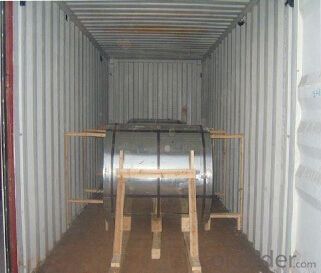
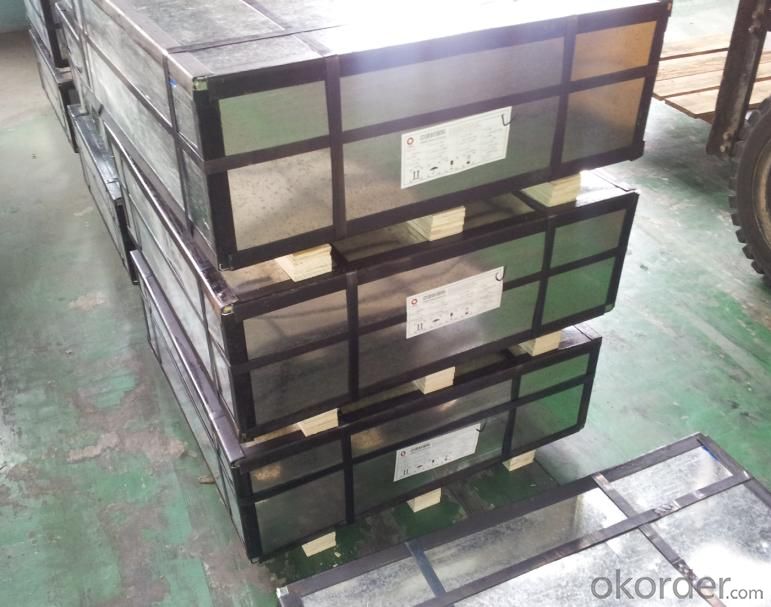
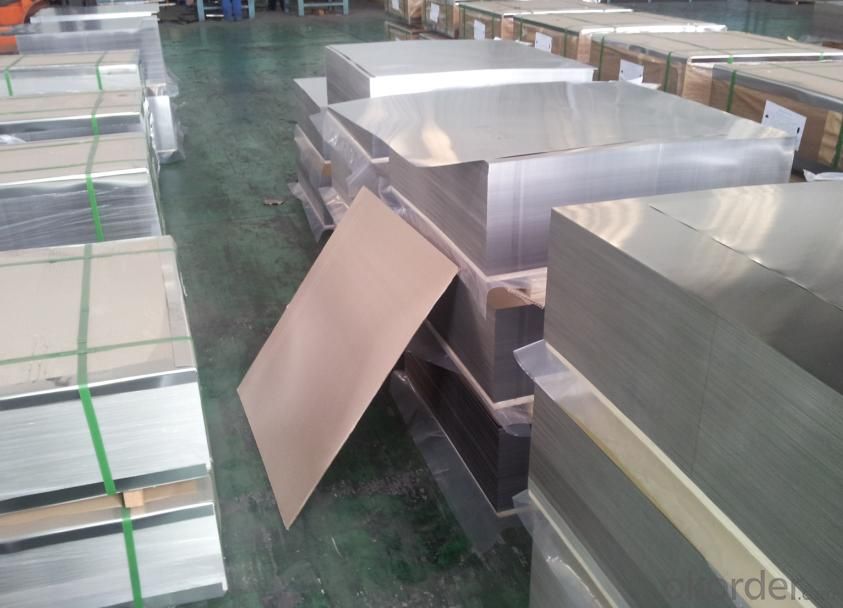
Sandard Seaworth Packing(wooden packing with water proof paper)
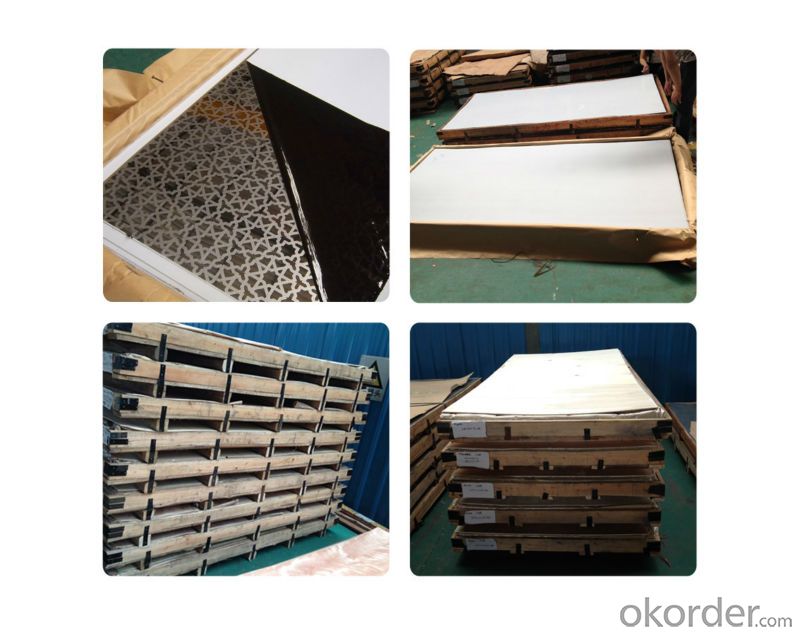
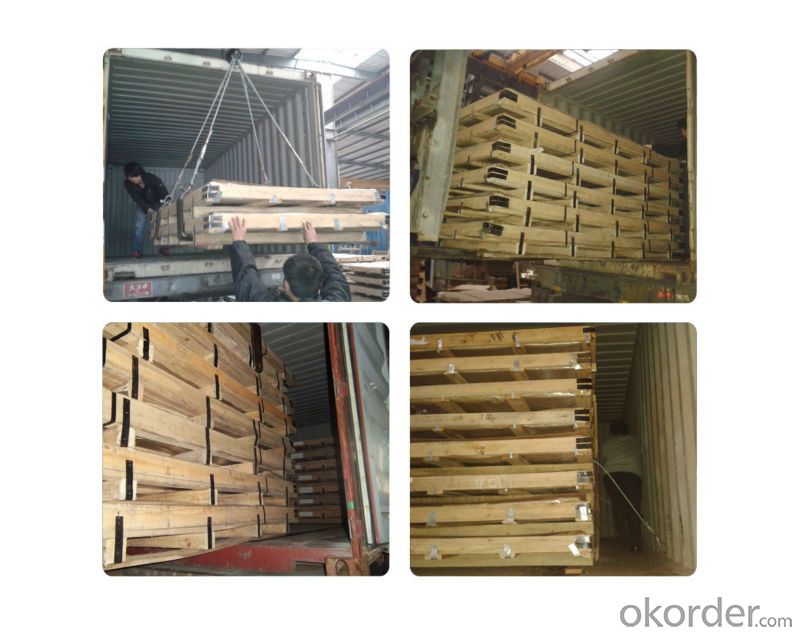
FAQ:
1. What's the quality?
very fine
2. How long get reply?
within 24 hours
If you have any question about stainless steel sheets,donot forget to sending the email to Us! You will get the competitive Price and have a very good experience about the Buying Process! CNBM International Corporation is always your trustful friend!
- Q:How do stainless steel sheets resist corrosion?
- Stainless steel sheets resist corrosion due to the presence of chromium, which forms a protective layer on the surface of the material. This layer, known as chromium oxide, acts as a barrier against moisture, oxygen, and other corrosive substances, preventing them from reaching the underlying steel and causing corrosion.
- Q:What are the common manufacturing standards for stainless steel sheets?
- There are several common manufacturing standards for stainless steel sheets that ensure their quality and consistency. One of the most widely recognized standards is the ASTM International (formerly known as the American Society for Testing and Materials) standard. ASTM A240 is the specific standard for stainless steel sheets, which specifies the requirements for chemical composition, mechanical properties, and other relevant characteristics of the material. Another important manufacturing standard is the EN (European Norm) standard, specifically EN 10088, which provides guidelines for stainless steel flat products, including sheets. This standard covers various aspects such as dimensions, tolerances, surface finishes, and more. Additionally, there are national standards developed by different countries. For example, in Japan, the Japanese Industrial Standards (JIS) classify stainless steel sheets under various specifications such as JIS G4304 and JIS G4305. These standards define the requirements for chemical composition, mechanical properties, and surface finishes of stainless steel sheets. In the United States, the American Iron and Steel Institute (AISI) also sets standards for stainless steel sheets. The AISI 300 and 400 series are commonly used in the manufacturing of stainless steel sheets, and their properties are defined by the AISI. It is important for manufacturers and suppliers to adhere to these standards to ensure that the stainless steel sheets meet the desired quality requirements and can be used reliably in various applications. These standards help maintain consistency, compatibility, and traceability in the production and use of stainless steel sheets across different industries.
- Q:Can stainless steel sheets be used for water tanks or storage containers?
- Certainly, water tanks or storage containers can be made using stainless steel sheets. This material is widely chosen for these purposes because of its remarkable resistance to corrosion and durability. Its ability to resist rust and corrosion makes it perfect for storing water or other liquids. Moreover, stainless steel is hygienic and effortless to clean, which is vital for preserving the purity of stored water or food items. Furthermore, stainless steel sheets can be easily shaped and sized to meet the specific needs of the water tank or storage container. All in all, stainless steel sheets are a dependable and enduring choice for water tanks or storage containers.
- Q:Can stainless steel sheets be used for outdoor sculptures?
- Yes, stainless steel sheets can be used for outdoor sculptures. Stainless steel is highly resistant to corrosion, making it ideal for outdoor applications where the sculpture will be exposed to various weather conditions. It can withstand rain, snow, heat, and UV radiation without losing its strength or deteriorating. Additionally, stainless steel has a sleek and modern appearance which can enhance the visual impact of the sculpture. Its durability and resistance to rust make it a popular choice for outdoor sculptures in parks, gardens, and public spaces.
- Q:Lead and stainless steel plate welding together? How do you solder it?
- Lead and stainless steel, two different metal elements. Although the welding process is difficult, it can still be welded together.
- Q:What is the weldability of stainless steel sheets?
- Stainless steel sheets have good weldability due to their composition and properties. They can be easily welded using various welding techniques, such as TIG (Tungsten Inert Gas) or MIG (Metal Inert Gas) welding. However, the specific weldability may vary depending on the grade and thickness of the stainless steel sheet. It is important to use appropriate welding procedures and techniques to ensure a strong and durable weld.
- Q:What factors affect the cost of stainless steel sheets?
- There are several factors that can affect the cost of stainless steel sheets. These include the type and grade of stainless steel, the thickness and size of the sheets, the quantity being purchased, market demand and availability, production and labor costs, and any additional processing or finishing requirements.
- Q:Are stainless steel sheets resistant to chemicals?
- Generally, chemicals do not pose a problem for stainless steel sheets. Stainless steel is famous for its ability to resist corrosion, which is why it is widely used in industries like chemical processing, pharmaceuticals, and food processing. The presence of elements like chromium and nickel in stainless steel forms a protective layer on its surface, preventing most chemicals from penetrating. However, it's important to note that the resistance to chemicals may vary depending on the grade and composition of the stainless steel used. In highly aggressive environments or when dealing with specific chemicals, it's advisable to consult a materials engineer or refer to compatibility charts to ensure the best stainless steel grade is chosen.
- Q:Are stainless steel sheets suitable for dairy processing equipment?
- Yes, stainless steel sheets are highly suitable for dairy processing equipment. Stainless steel is known for its corrosion resistance, durability, and hygiene properties, making it an ideal material for equipment used in the dairy industry. It is easy to clean, resistant to bacterial growth, and does not react with dairy products, ensuring the safety and quality of the processed food.
- Q:How do I determine the flatness of stainless steel sheets?
- To assess the flatness of stainless steel sheets, the following steps can be followed: 1. Visual Examination: Initially, visually inspect the sheet for any visible indications of warping, bending, or unevenness. Look for noticeable waves, ripples, or twists on the surface. While this method may not provide precise results, it can give a preliminary understanding of the overall flatness of the sheet. 2. Straight Edge Measurement: Position a straight edge, such as a ruler or long level, on the surface of the stainless steel sheet. Move the straight edge across different areas of the sheet, paying attention to both the center and edges. Observe if there are any gaps or spaces between the straight edge and the sheet. A continuous contact between the straight edge and the sheet suggests a satisfactory level of flatness. 3. Feeler Gauge Utilization: Employ a feeler gauge, which is a precise measurement tool containing thin metal blades of varying thicknesses. This tool can be used to more accurately measure the gap between the straight edge and the stainless steel sheet. Slide the feeler gauge into any gaps between the sheet and the straight edge, noting the blade thickness that fits snugly. This will help determine the extent of any unevenness or bowing present. 4. Laser Measurement: For more accurate measurements, a laser measuring device can be employed. Position the laser device at one end of the sheet and measure the distance from the laser to the surface at different points along the length of the sheet. Repeat this process at the opposite end of the sheet. Comparing these measurements will provide an indication of any variations in flatness. 5. Professional Testing: In cases where the stainless steel sheets are intended for critical applications or when precise flatness is essential, consulting with a professional testing service is advisable. These experts can employ advanced techniques such as optical profilometry or coordinate measuring machines to accurately measure the flatness of the sheet. It is important to acknowledge that due to the inherent characteristics of stainless steel, minor deviations from perfect flatness may be acceptable within industry standards. The required level of flatness will depend on the specific application and the tolerance standards set by the manufacturer or customer.
1. Manufacturer Overview |
|
|---|---|
| Location | |
| Year Established | |
| Annual Output Value | |
| Main Markets | |
| Company Certifications | |
2. Manufacturer Certificates |
|
|---|---|
| a) Certification Name | |
| Range | |
| Reference | |
| Validity Period | |
3. Manufacturer Capability |
|
|---|---|
| a)Trade Capacity | |
| Nearest Port | |
| Export Percentage | |
| No.of Employees in Trade Department | |
| Language Spoken: | |
| b)Factory Information | |
| Factory Size: | |
| No. of Production Lines | |
| Contract Manufacturing | |
| Product Price Range | |
Send your message to us
Stainless Steel Sheet and plate with surface treatment
- Loading Port:
- Shanghai
- Payment Terms:
- TT OR LC
- Min Order Qty:
- 250 m.t.
- Supply Capability:
- 5000000 m.t./month
OKorder Service Pledge
OKorder Financial Service
Similar products
New products
Hot products
Related keywords
